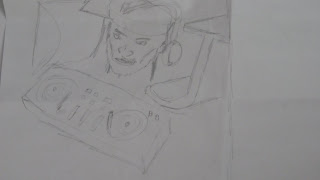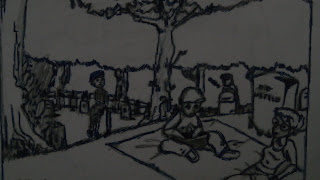MIND MAPPING
FESTIVAL MIND MAPPING
MEDIA ENTERTAINMENT
Media entertainment involves the use of technology to please and pass on a message. Entertainment has been there since the dawn of man but it is during the advent of electricity that it was truly revolutionized. From electricity, the radios, television sets and computers were born and this paved way for a new era in entertainment.
In order to fully understand the impact of Media Entertainment, it is paramount to understand what forms of entertainment existed before the media came into play. Before the media became such a formidable force in the entertainment industry, entertainment in the past was most exclusively based on performance arts such as dancing, opera and the like. This, needless to say would be centered and presented among a small group of receivers since no form of broadcasting was present at the time. Entertainment was limited to the high society and royalty who could afford to build entertainment houses and hire performers to keep them entertained. Common folk had a harder time trying to get entertained and thus the need for entertainment for the masses triggered the electronic entertainment revolution that we currently enjoy to this day.
Among the devices that have had the most impact in media entertainment are the radio, the television set and the computer. The radio's invention involved the participation of many engineers and scientist and hence not one inventor can be accredited to the invention. However, in 1885, David E. Hughes made an eye opening discovery that would change the face of communication. He realized that sparks from his carbon based microphone could be heard in a telephone receiver. He developed that technology further until the sparks could be heard over a hundred yards before presenting it to the royal society in 1880. A patent was however created by Thomas Edison and his employees in 1885. These contributions by various scientists continued over a period of years before Alexander Stepanovich Popov built his first radio receiver in 1895.
The initial contribution to the development of the Television was by a German student called Paul Gottlieb Nipkow who patented his first electromechanical television. Later on, in 1925 a Scottish inventor Joh Loggie Blaird demonstrated the transmission of moving silhouettes in London.
The computer system's invention can be traced back to the mechanical calculator the ABACUS that was used in the ancient world to make calculations. However, with the advent of electricity, the functions of this device were enhanced through the use of vacuum tubes, transistors and down to the modern age micro chip. The computer has probably had the biggest impact on media entertainment since it is because of the computer that interactivity thrives in today's media world. The ability of a user to communicate with a device became the turning point that ensured the dawning of a new era in the entertainment world. Before, viewers were mainly passive and all of the entertainment was planned and presented by a few individuals. However now, most of the entertainment content is user generated and this allows for the viewers to pick and choose and to come up with entertainment that best suits them.
Another technology that cannot be under estimated in its role in media entertainment is the internet. The internet has reduced the world to a village in the sense that information can find its way across continents and oceans in a matter of milliseconds. The ability to transport and communicate data in this form has enabled the internet users to share ideas and content and thus many new forms of media entertainment have arisen such as home videos, blogs, online role playing games and the like.
While remembering the trend of media entertainment over the ages, it is also important to put in mind its impact to the society. Today's society is an entertainment centered society with the entertainment industry alone raking in hundreds of billions of dollars every year. People have found the need to express themselves and to get loose through partaking in such media. This has allowed for the flourishing of some negative aspects such as a lack of intimate communication and rebellion among youngsters. It has also enabled anarchists to spread terror and propagandas through the media sources and thus this is a reason to be concerned. One good example was the use of propaganda films during the third Reich which were used to imprison people's minds and alter their mindsets and concepts of good and bad, righteousness and evil. This in part led to the onset of violent uprisings such as the holocaust and the recent happenings such as terrorism.
While partaking of the endless opportunities available in media entertainment, its use has to be regulated and controlled to prevent it from harming the society and to prevent people with the power of media from controlling those who partake of their entertainment.
IDEA ILLUSTRATIONS






FINAL PRODUCT
the outcome of the information and brainstorming done on the media entertainment looking at festivals /ceremonies is a well edited creatively coordinated short film on festival..
view and recognize the different places and cultures on the short film for when travelling and knowledge. Enjoy trying to figure out where our creativity has taken you!!!!
Group Members
1071117892……….Jimmy L Ramantsima……………www.creativitymyway@blogspot.com
1041111480…….…Mohd Namazi……………………www.mlc1013fridaygroup.blogspot.com
1071117487……… Diamond O Mosweu
1081106819………Mir Mobarak Mobaraki
1081107044……... mohammad mahdi mohebali…….http://mmohebali.blogspot.com/
1081800007 ……...BABAK ANOUSHE …………….http://babakanoushepour.blogspot.com/






































